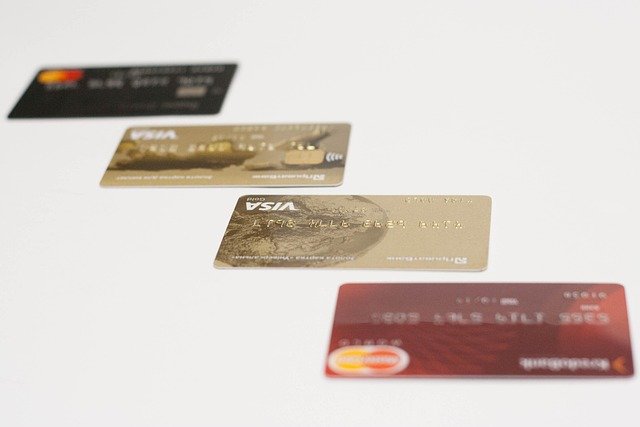5 Tips on How to Choose the Right Credit Card
Selecting the right credit card can be a daunting task, given the numerous options available in the market. Each card comes with its own set of features, benefits, and potential drawbacks. Understanding how to navigate these choices is crucial for making a decision that aligns with your financial needs and lifestyle. This article will explore five essential tips to help you choose the most suitable credit card for your circumstances.

5 Tips on How to Choose the Right Credit Card
Choosing the appropriate credit card is a crucial financial decision that extends far beyond simply picking the first offer that arrives in your mailbox. The right card can enhance your purchasing power, provide valuable benefits, and help build a strong credit profile. However, with hundreds of options available from various issuers, each with different terms, rewards structures, and requirements, the selection process can feel overwhelming.
Successful credit card selection requires a systematic approach that considers your unique financial situation, spending behaviors, and long-term goals. Whether you’re applying for your first card or looking to optimize your existing credit portfolio, understanding the key evaluation criteria will help you make a decision that aligns with your needs and maximizes the value you receive from your chosen card.
How to Assess Your Spending Habits and Financial Goals
Before exploring available options, conduct an honest evaluation of your monthly spending patterns and financial objectives. Review bank statements from the past three to six months to identify where your money goes most frequently. Common spending categories include groceries, gas, dining, travel, and online purchases. This analysis reveals which reward categories would provide the most value for your lifestyle.
Consider your financial goals alongside spending habits. If you’re focused on building credit, look for cards that report to all three major credit bureaus and offer credit monitoring tools. For those planning major purchases, cards with introductory 0% APR periods on purchases might be beneficial. Travel enthusiasts should prioritize cards offering travel rewards and benefits, while cashback seekers might prefer straightforward percentage rewards on everyday purchases.
What are the Credit Card Benefits Beyond Rewards
While rewards programs often capture the most attention, numerous other benefits can provide substantial value. Purchase protection covers eligible items against theft or damage for a specified period after purchase. Extended warranty protection doubles the manufacturer’s warranty on covered items, potentially saving hundreds on repairs or replacements.
Travel-related benefits include trip cancellation insurance, baggage delay compensation, and rental car insurance coverage. Some cards offer price protection, automatically monitoring purchases for price drops and providing refunds when items go on sale. Additional perks might include access to airport lounges, concierge services, or exclusive entertainment experiences. These benefits often justify annual fees and can provide more value than the rewards program itself.
How to Compare Credit Card Fees and Interest Rates
Understanding the complete fee structure is essential for accurate cost comparison. Annual fees range from $0 to several hundred dollars, depending on the card’s benefits and target market. Balance transfer fees typically range from 3% to 5% of the transferred amount, while cash advance fees often match this range with additional daily interest charges.
Foreign transaction fees, usually 2.5% to 3% of international purchases, can add up quickly for frequent travelers. Late payment fees range from $25 to $40, while over-limit fees have become less common due to regulatory changes. Interest rates vary significantly based on creditworthiness, with rates typically ranging from 15% to 25% for standard purchases. Promotional rates for balance transfers or new purchases can offer temporary relief but eventually revert to standard rates.
| Card Type | Typical APR Range | Annual Fee | Balance Transfer Fee |
|---|---|---|---|
| Basic Rewards | 16.99% - 24.99% | $0 - $95 | 3% - 5% |
| Premium Travel | 17.99% - 24.99% | $95 - $550 | 3% - 5% |
| Cashback | 15.99% - 23.99% | $0 - $150 | 3% - 5% |
| Business Cards | 16.99% - 22.99% | $0 - $695 | 3% - 5% |
Prices, rates, or cost estimates mentioned in this article are based on the latest available information but may change over time. Independent research is advised before making financial decisions.
What Credit Score is Needed for Different Types of Cards
Credit score requirements vary significantly across different card categories and issuers. Basic cards designed for credit building typically accept scores as low as 580 to 629, though terms may include higher interest rates and lower credit limits. Standard rewards cards generally require good credit, with scores ranging from 670 to 739 providing access to competitive offers.
Premium cards with extensive benefits and high reward rates typically require excellent credit scores of 740 and above. Some ultra-premium cards may require scores exceeding 800, along with substantial income requirements. Secured cards, which require a security deposit, are available to those with limited or damaged credit history. These cards often provide a path to unsecured credit products as payment history improves.
How to Evaluate the Card Issuer’s Customer Service and Digital Tools
The quality of customer service and digital platforms significantly impacts your ongoing experience with any credit card. Research issuer reputation through consumer review websites, Better Business Bureau ratings, and J.D. Power customer satisfaction surveys. Look for 24/7 customer support availability, multiple contact methods, and reasonable wait times for assistance.
Digital tools have become increasingly important for account management and financial tracking. Evaluate mobile app functionality, including features like spending categorization, bill pay capabilities, and real-time transaction alerts. Advanced tools might include credit score monitoring, spending analysis, and budgeting assistance. Consider whether the issuer offers integration with popular financial management platforms and provides comprehensive online account management capabilities.
Making Your Final Decision
After evaluating all factors, create a shortlist of cards that align with your spending patterns, credit profile, and financial goals. Calculate the net value of each option by estimating annual rewards earnings and subtracting all applicable fees. Consider both immediate benefits and long-term value, including how the card might serve your evolving needs.
Remember that the best credit card is one that matches your specific situation and usage patterns. A card with impressive benefits that don’t align with your lifestyle provides little value, while a simple cashback card might be perfect for straightforward spending habits. Take time to read terms and conditions carefully, and don’t hesitate to contact issuers directly with specific questions before making your final selection.



